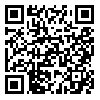1. American Psychiatric Association. Diagnostic and statistical manual of mental disorders: DSM–5. Washington, DC: American Psychiatric Association; 2013.
2. Alizadeh A, Farnam F, Raisi F, Parsaeian M. Prevalence of and risk factors for genito–pelvic pain/penetration disorder: a population–based study of Iranian women. J Sex Med. 2019;16(7):1068–77. [
DOI]
3. Banaei M, Kariman NS, Ozgoli G, Nasiri M, Khiabani A. Sexual penetration cognitions in women with genito–pelvic pain and penetration disorder: a systematic review and meta–analysis. Sexual and Relationship Therapy. 2023;38(4):638–52. [
DOI]
4. Lopez–Brull A, Perez–Dominguez B, Blasco–Ortiz C, Morales–Baixauli M, Nahon I, Casaña–Granell J. Assessing sexual functioning with the female sexual function index in women suffering from Genito–pelvic pain penetration disorder undergoing a therapeutic educational program. American Journal of Sexuality Education. 2024;19(3):337–46. [
DOI]
5. Alizadeh A, Farnam F. Coping with dyspareunia, the importance of inter and intrapersonal context on women's sexual distress: a population–based study. Reprod Health. 2021;18(1):161. [
DOI]
6. ter Kuile MM, Weijenborg PTM. A woman who never could have coitus: treatment of lifelong vaginismus. In: Bio–psycho–social obstetrics and gynecology: a competency–oriented approach. Cham, Switzerland: Springer International Publishing/Springer Nature; 2017. pp: 297–309. [
DOI]
7. Pithavadian R, Chalmers J, Dune T. The experiences of women seeking help for vaginismus and its impact on their sense of self: an integrative review. Womens Health (Lond). 2023;19:17455057231199383.
8. Kurban D, Eserdag S, Yakut E, Mishra PC. The treatment analysis of the patients suffering from vaginismus and the correlation with the psychological issues. International Journal of Reproduction, Contraception, Obstetrics and Gynecology. 2021;10(4):1328–36. [
DOI]
9. Charbonneau–Lefebvre V, Rosen NO, Bosisio M, Vaillancourt–Morel MP, Bergeron S. An attachment perspective on partner responses to Genito–pelvic pain and their associations with relationship and sexual outcomes. J Sex Res. 2021;58(2):235–47. [
DOI]
10. Maseroli E, Scavello I, Rastrelli G, Limoncin E, Cipriani S, Corona G, et al. Outcome of medical and psychosexual interventions for vaginismus: a systematic review and meta–analysis. J Sex Med. 2018;15(12):1752–64. [
DOI]
11. Wallace SL, Miller LD, Mishra K. Pelvic floor physical therapy in the treatment of pelvic floor dysfunction in women. Curr Opin Obstet Gynecol. 2019;31(6):485–93. [
DOI]
12. Turk DC. Cognitive–behavioral approach to the treatment of chronic pain patients. Reg Anesth Pain Med. 2003;28(6):573–9. [
DOI]
13. Işık C, Aslan E. The effects of sexual counseling and pelvic floor relaxation on sexual functions in women receiving vaginismus treatment: a randomized controlled study. Int Urogynecol J. 2023;34(3):683–92. [
DOI]
14. Ergani SY, Ulusoy CO, Bolat Meriç N, Tokgöz Çakır B, Akdas Reis Y, Demirçendek B, et al. Evaluation of sexual function and satisfaction before and after therapy in couples who applied with the diagnosis of vaginismus. Ankara City Hospital Medical Journal. 2023;2(3):146–51. [
DOI]
15. Bergeron S, Pâquet M, Steben M, Rosen NO. Perceived partner responsiveness is associated with sexual well–being in couples with genito–pelvic pain. J Fam Psychol. 2021;35(5):628–38. [
DOI]
16. Bilal A, Rasool S. Marital satisfaction and satisfaction with life: mediating role of sexual satisfaction in married women. Journal of Psychosexual Health. 2020;2(1):77–86. [
DOI]
17. Reisy L, Ziaee S, Mohamad E, Haji zade E. Designing a questionnaire for diagnosis of vaginismus and determining its validity and reliability. Journal of Mazandaran University of Medical Sciences. 2015;25(125):81–94. [Persian] [
Article]
18. Derogatis LR, Lipman RS, Covi L. SCL–90: an outpatient psychiatric rating scale–preliminary report. Psychopharmacol Bull. 1973;9(1):13–28.
19. Krueger RF, Derringer J, Markon KE, Watson D, Skodol AE. Initial construction of a maladaptive personality trait model and inventory for DSM–5. Psychol Med. 2012;42(9):1879–90. [
DOI]
20. Rosen R, Brown C, Heiman J, Leiblum S, Meston C, Shabsigh R, et al. The Female Sexual Function Index (FSFI): a multidimensional self–report instrument for the assessment of female sexual function. J Sex Marital Ther. 2000;26(2):191–208. [
DOI]
21. Fakhri A, Morshedi H, Soleymanian A. Psychometric properties of Iranian Version of Male Sexual Function Index. Jundishapur Scientific Medical Journal. 2014;12(6):655–63. [Persian] [
Article]
22. Rosen RC, Catania J, Pollack L, Althof S, O'Leary M, Seftel AD. Male Sexual Health Questionnaire (MSHQ): scale development and psychometric validation. Urology. 2004;64(4):777–82. [
DOI]
23. Rust J, Golombok S. The Golombok–Rust Inventory of Sexual Satisfaction (GRISS). Br J Clin Psychol. 1985;24 ( Pt 1):63–4. [
DOI]
24. Besharat MA, Rafiezadeh B. Prediction of sexual satisfaction and marital adjustment levels according to job variables, commitment, intimacy, and sexual knowledge and attitude. Iranian Journal of Family Psychology. 2021;3(1):31–46. [Persian] [
Article]
25. Spanier GB. Measuring dyadic adjustment: new scales for assessing the quality of marriage and similar dyads. Journal of Marriage and the Family. 1976;38(1):15–28. [
DOI]
26. Molazadeh J, Mansour M, Ezhehei J, Kiamanesh A. Coping styles and marital adjustment among martyrs' children. Journal of Psychology. 2002;6(3):255–75. [Persian]
27. Akhavan Abiri F, Shairi MR. Validity and reliability of Symptom Checklist–90–Revised (SCL–90–R) and Brief Symptom Inventory–53 (BSI–53). Clinical Psychology and Personality. 2020;17(2):169–95. [
DOI]
28. Amini M, Lotfi M, Sadeghi S, Khorrami Z. Structure and internal consistency evaluation of Personality Inventory for DSM–5 in an Iranian population. Koomesh; 2019;21(1):102–5. [
Article]
29. Zeanah DP, Schwarz JC. Reliability and validity of the Sexual Self–Esteem Inventory for Women. Assessment. 1996;3(1):1–15. [
DOI]
30. Farokhi S, Shareh H. Psychometric properties of the Persian version of the Sexual Self–Esteem Index for Woman–Short Form. Iranian Journal of Psychiatry and Clinical Psychology. 2014;20(3):252–63. [Persian] [
Article]
31. Vaziri S, Lotfi Kashani F. Study of factor structure, reliability and validity of the Sexual Self–Efficacy Questionnaire. Thoughts and Behavior in Clinical Psychology. 2013;4(29):47. [Persian] [
Article]
32. Schwarzer R, Jerusalem M. Measurement of perceived self–efficacy: psychometric scales for cross–cultural research. Berlin: Freie University; 1993.
33. Corsini–Munt S, Bergeron S, Rosen NO, Mayrand MH, Delisle I. Feasibility and preliminary effectiveness of a novel cognitive–behavioral couple therapy for provoked vestibulodynia: a pilot study. The Journal of Sexual Medicine. 2014;11(10):2515–27.
34. Ter Kuile MM, Melles R, de Groot HE, Tuijnman–Raasveld CC, van Lankveld JJDM. Therapist–aided exposure for women with lifelong vaginismus: a randomized waiting–list control trial of efficacy. J Consult Clin Psychol. 2013;81(6):1127–36. [
DOI]
35. Wilson FR, Pan W, Schumsky DA. Recalculation of the critical values for Lawshe's content validity ratio. Measurement and Evaluation in Counseling and Development. 2012;45(3):197–210. [
DOI]
36. Bergeron S, Vaillancourt–Morel MP, Corsini-Munt S, Steben M, Delisle I, Mayrand MH, et al. Cognitive–behavioral couple therapy versus lidocaine for provoked vestibulodynia: A randomized clinical trial. J Consult Clin Psychol. 2021;89(4):316–26. [
DOI]
37. Moss J, Firebaugh C, Morgan S. Assertiveness, Self–esteem, and relationship satisfaction. International Journal of Arts and Social Science. 2021;4:11.
38. Veshki SK, Pour EJ, Pasha S. Effectiveness of group therapy with cognitive–behavioral approach on negative feelings of the women toward their husband's family and the marital conflicts. Jundishapur Journal of Health Sciences; 2020;12(4);e103619.
39. Amini M, Guodarzi M, Shahgheibi S. Comparing the effectiveness of cognitive behavioral couple therapy and EIS model on sexual function, among pregnant women. Avicenna Journal of Nursing and Midwifery Care. 2021;29(3):233–44. [Persian] [
DOI]
40. Nezamnia M, Iravani M, Bargard MS, Latify M. Effectiveness of cognitive–behavioral therapy on sexual function and sexual self–efficacy in pregnant women: An RCT. Int J Reprod Biomed. 2020;18(8):625–36. [
DOI]
41. Gauvin S, Smith KB, Chamberlain S, Pukall C. Communication patterns in women with provoked vestibulodynia and their partners. Psychology & Sexuality. 2019;10(4):369–82. [
DOI]
42. Anğın AD, Gün İ, Sakin Ö, Çıkman MS, Eserdağ S, Anğın P. Effects of predisposing factors on the success and treatment period in vaginismus. JBRA Assist Reprod. 2020;24(2):180–8. [
DOI]





